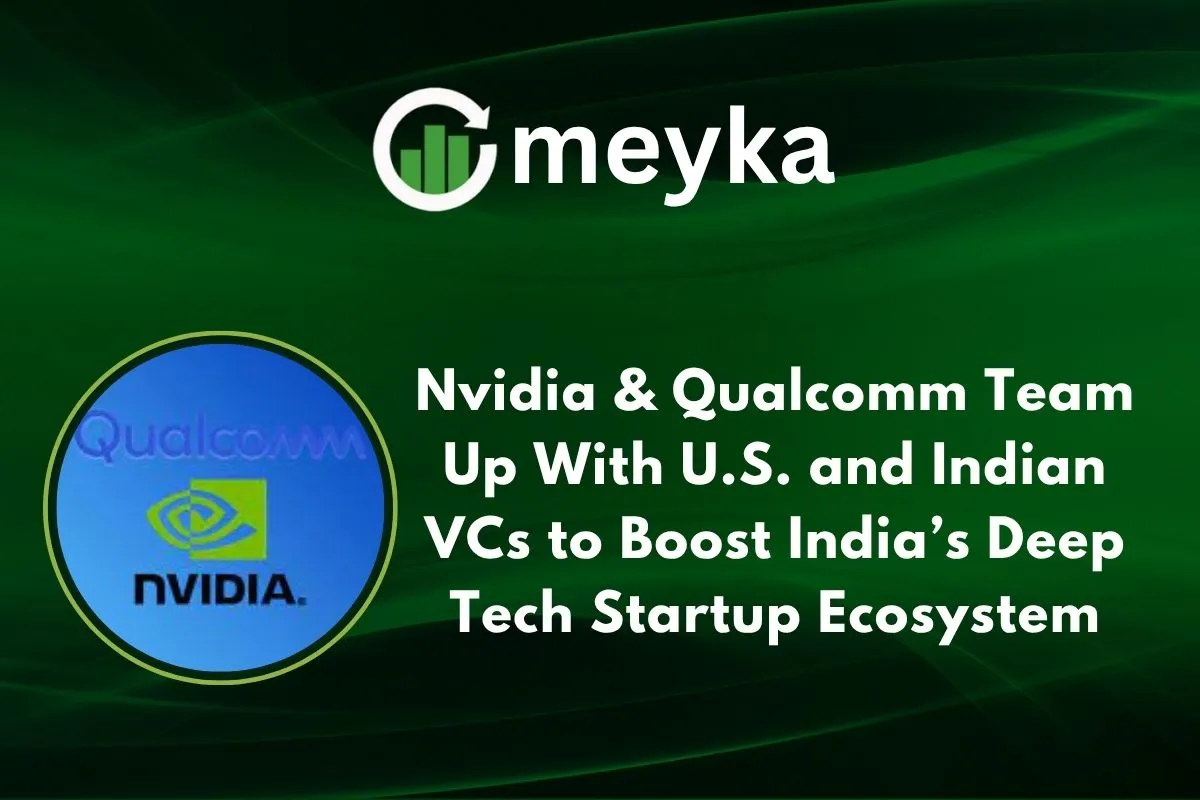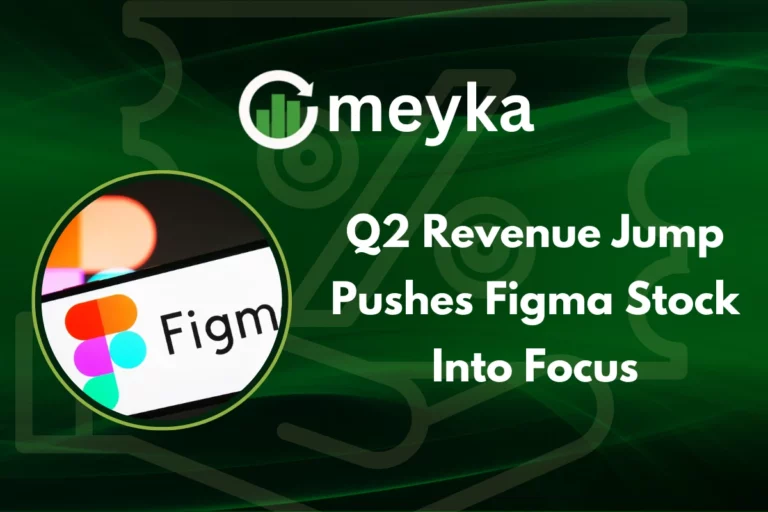Nvidia & Qualcomm Team Up With U.S. and Indian VCs to Boost India’s Deep Tech Startup Ecosystem
India’s journey into deep tech is entering a bold new phase. We are now seeing tech giants like Nvidia and Qualcomm join forces with major U.S. and Indian venture capital firms to energize India’s deep-tech startup ecosystem. These moves align with India’s push to become a global innovation hub for advanced fields like AI, semiconductors, robotics, and quantum computing.
Why India’s Deep Tech Ecosystem Matters
Deep tech means inventions rooted in science and engineering, things like new chips, AI that can think like humans, robots that solve serious problems, or quantum machines that change computation. India is ready for this because it boasts a huge talent pool in STEM, rapid digital adoption, and government backing in tech innovation.
For example, under the India Semiconductor Mission, the country approved new wafer-fab projects recently.
We should care because when deep tech thrives, the effects ripple out: new jobs, smarter healthcare, cleaner energy, stronger national security, and less dependency on others’ tech.
Nvidia & Qualcomm: Tech Giants Fueling Innovation
Nvidia is known globally for its GPUs that power AI, big data, and high-performance computing. With AI becoming central to everything, Nvidia’s role becomes critical. In India, its involvement as a technical adviser promises to bring top-level skills and infrastructure.
Qualcomm is a leader in wireless communication, chips, and mobile platforms. In India, Qualcomm sees not just consumer gadgets but complex systems, edge AI, IoT, and next-gen connectivity. Its investments in Indian startups show it is serious about local innovation.
Together, Nvidia & Qualcomm bring two sides of deep tech: compute & software (Nvidia) and hardware & connectivity (Qualcomm).
Nature of the Partnership
In September 2025, a coalition was launched by U.S. and Indian VCs under the banner of the India Deep Tech Alliance (IDTA) with over US$1 billion in commitments.
Within this group:
- Nvidia joined as a strategic technical adviser (no direct financial contribution) but will provide training, tech access, and work with policy/industry.
- Qualcomm Ventures joined with a financial commitment of more than US $850 million alongside Indian venture firms like Activate AI, Chiratae Ventures, InfoEdge Ventures, and more.
The goal: give deep-tech Indian startups access to capital, mentorship, global networks, and high-end hardware/software support, things that were previously hard to access in India.
Key Focus Sectors
This partnership is aimed at several cutting-edge fields:
- Artificial Intelligence & Machine Learning, building smarter algorithms and systems.
- Semiconductor Design & Fabrication, designing chips in India, reducing dependence on imports.
- Robotics & Advanced Manufacturing, building physical systems, not just apps.
- Quantum Computing & Cybersecurity, preparing for the next wave of computing.
- Space Technology & Drones, Indian startups are already active here, and this push will boost them.
- Energy Tech & Advanced Materials, critical for climate goals, infrastructure, and innovation.
These sectors are high risk but high reward. They require longer development time, but the payoff can be large.
Why This Partnership Matters
We see several important trends here:
- It strengthens India, U.S. tech ties. The two countries already collaborate under frameworks like the United States-India Initiative on Critical and Emerging Technology (iCET).
- It helps India build local capability in chips and AI, reducing reliance on other countries.
- Startups gain access to global-scale tools and training. More of the “hard” tech (hardware, deep-science) can be done in India, not just software or services.
- Funding for deep tech in India is rising: in 2024, deep-tech funding grew 78 % year‐on‐year to about US $1.6 billion.
That shows the ecosystem is waking up, and this partnership accelerates it.
Expected Benefits for Indian Startups
For startup founders in India, this means:
- Better access to large-scale capital and patient funding (deep tech often takes years).
- Access to hardware, labs, compute, and mentorship from global players (via Nvidia/Qualcomm).
- Faster product development and better global reach.
- Building IP and products that can compete worldwide, no longer just service teams.
- Attracting talent, engineers, and researchers will find deep-tech roles attractive in India.
For the ecosystem: more jobs, higher value creation, stronger export potential.
Challenges Ahead
However, we must keep in mind realistic hurdles:
- Hardware infrastructure in India still lags: setting up fabs, labs, or chip-design centres is costly and takes time.
- Talent in very specialised fields (quantum, chip design, robotics) is still limited.
- Returns take time. Many deep-tech startups won’t pay off quickly; investors must be patient.
- Regulatory, IP, and policy frameworks must catch up to support these complex areas.
- Global competition is fierce; China, Taiwan, the U.S., and Korea are all pushing hard in the same sectors.
Future Outlook
Looking ahead, we can expect:
- India could become a global hub for AI + semiconductor + deep tech within the next decade. With this kind of backing, home-grown unicorns may emerge in new tech domains.
- More collaboration between corporates, academia, and startups.
- Expansion beyond current fields into biotech, materials science, defence tech, and new frontier sectors.
- Growing export of deep-tech products from India, not just services.
We are at a moment where the startup scene could shift from app-based ventures to engineering-heavy innovation.
Conclusion
To sum up: the alliance between Nvidia, Qualcomm, and U.S./Indian VCs is a landmark move in India’s tech story. It marks a clear shift toward deep innovation, not just apps and services. If we support it well, with policy, infrastructure, talent, and enterprise adoption, India could become one of the world’s key deep-tech centres. This matters for all of us: building stronger economies, creating high-value jobs, and solving big global challenges. We are watching the next wave of India’s tech rise, and it looks promising.
FAQS
Yes, Qualcomm competes with Nvidia in some areas. Both make chips and AI technology. Nvidia leads in GPUs for big computers, while Qualcomm leads in phones and edge chips. They are rivals but also work in different markets.
Top U.S. and Indian investors created a new $1B+ deep-tech alliance. Firms include Qualcomm Ventures, Peak XV, Accel, Lightspeed, Chiratae, and Info Edge. The goal is to support Indian deep-tech startups.
Qualcomm’s biggest competitor is usually considered to be MediaTek in phone chips. Nvidia, Apple, and Samsung also compete in some areas like AI chips and device processors.
Disclaimer:
The content shared by Meyka AI PTY LTD is solely for research and informational purposes. Meyka is not a financial advisory service, and the information provided should not be considered investment or trading advice.






